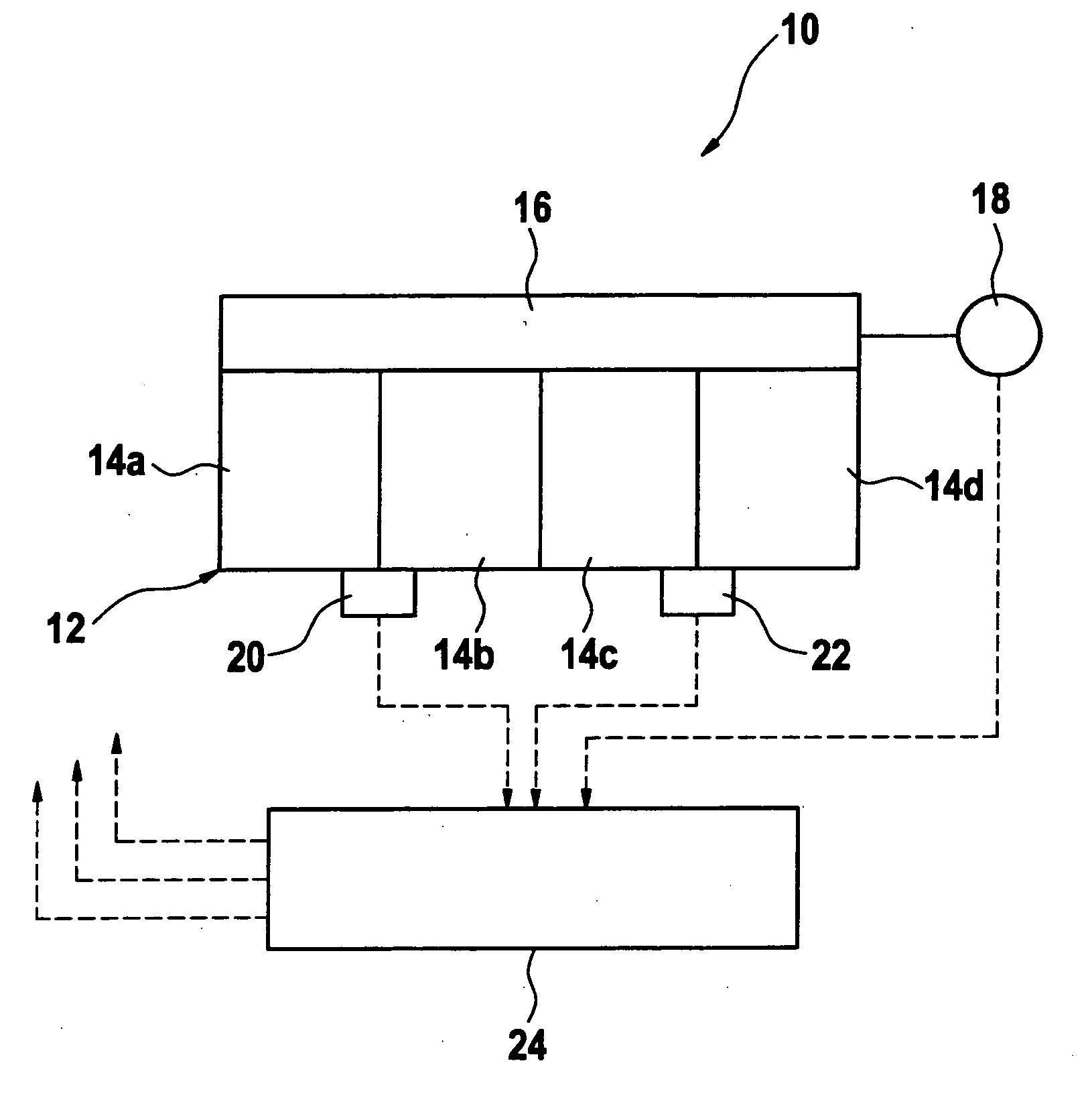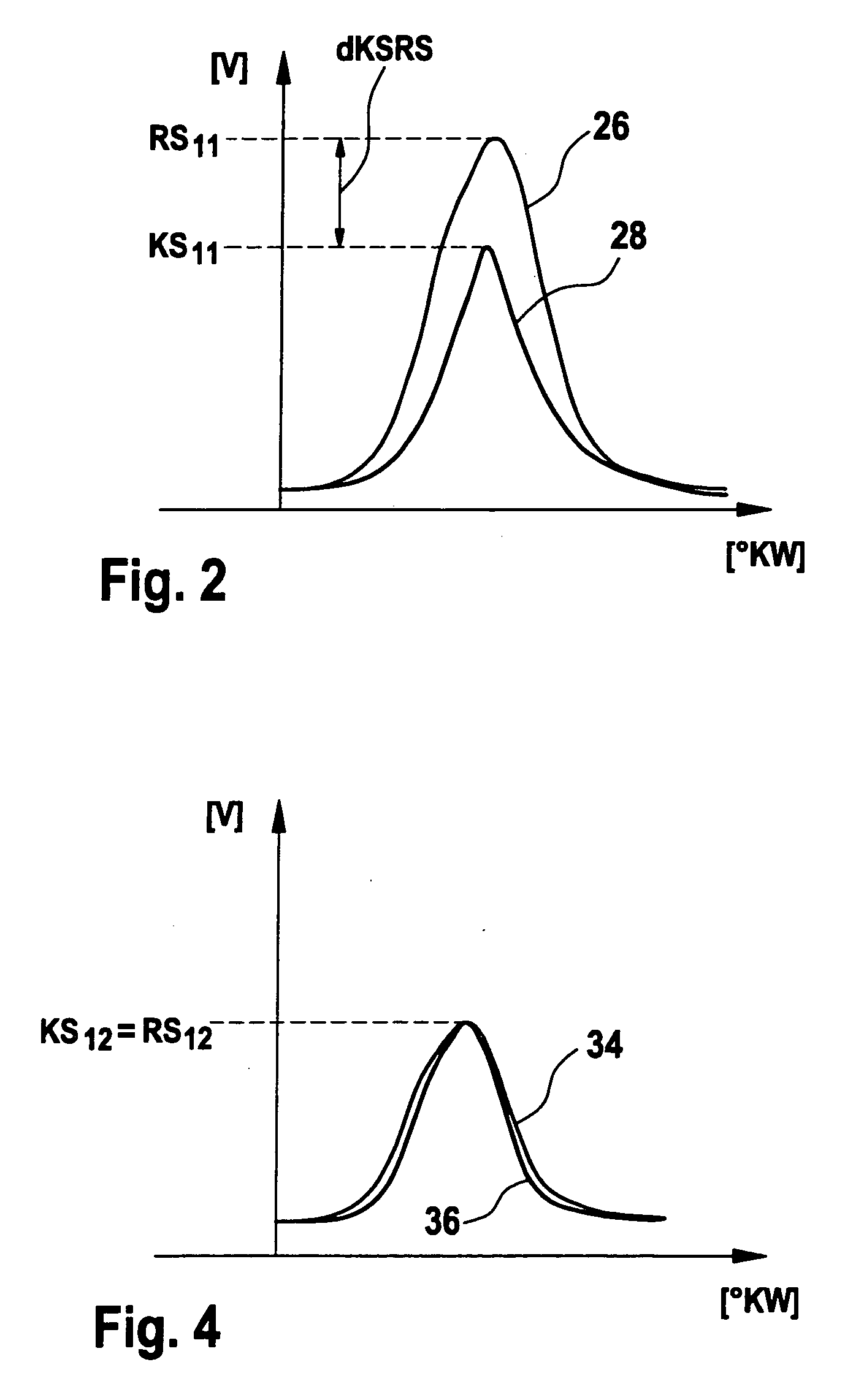Method for operating an internal combustion engine
a technology of internal combustion engine and combustion chamber, which is applied in the direction of machines/engines, electric control, instruments, etc., can solve the problems of favorable influence of emissions and fuel consumption
- Summary
- Abstract
- Description
- Claims
- Application Information
AI Technical Summary
Benefits of technology
Problems solved by technology
Method used
Image
Examples
Embodiment Construction
[0022] An internal combustion engine is labeled overall with reference numeral 10 in FIG. 1. It is used for the propulsion of a motor vehicle, not depicted in FIG. 1, and operates by the diesel principle. There are four in-line combustion chambers 14a, 14b, 14c, and 14d in an engine block 12. As is known, a crankshaft 16 is set into rotation when engine 10 is operated, and its rotational speed and angular position are detected by a sensor 18.
[0023] A first structure-borne noise sensor 20 is situated on engine block 12 in the middle between combustion chambers 14a and 14b. A second structure-borne noise sensor 22 is situated on engine block 12 in the middle between combustion chambers 14c and 14d. The signals of sensors 18, 20, and 22 are supplied to a control and / or regulating unit 24, which controls and / or regulates the operation of engine 10.
[0024] In order to recognize, quantify, and compensate a drift of the signal of first structure-borne noise sensor 20, for example, a proce...
PUM
 Login to View More
Login to View More Abstract
Description
Claims
Application Information
 Login to View More
Login to View More - R&D
- Intellectual Property
- Life Sciences
- Materials
- Tech Scout
- Unparalleled Data Quality
- Higher Quality Content
- 60% Fewer Hallucinations
Browse by: Latest US Patents, China's latest patents, Technical Efficacy Thesaurus, Application Domain, Technology Topic, Popular Technical Reports.
© 2025 PatSnap. All rights reserved.Legal|Privacy policy|Modern Slavery Act Transparency Statement|Sitemap|About US| Contact US: help@patsnap.com



